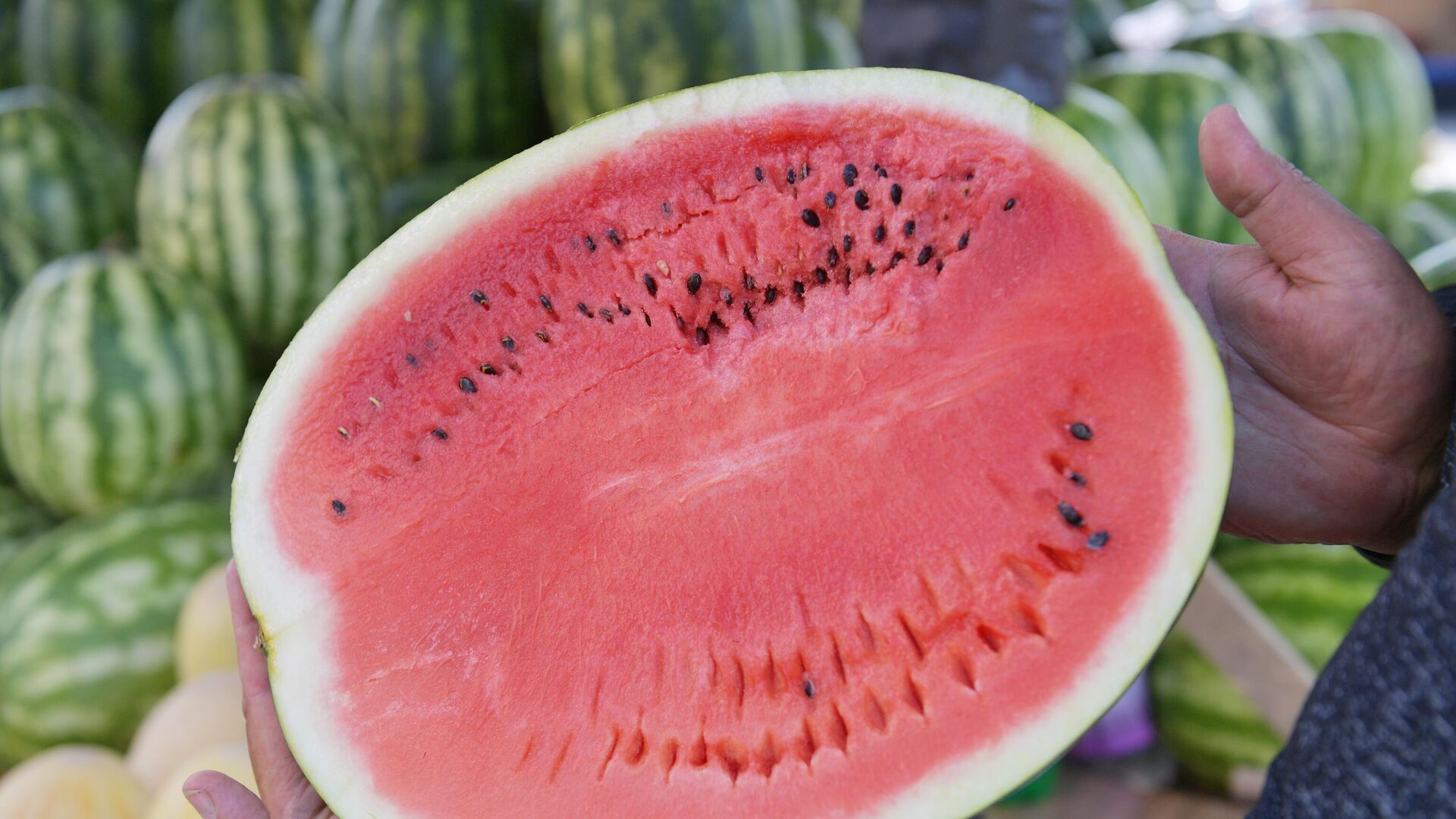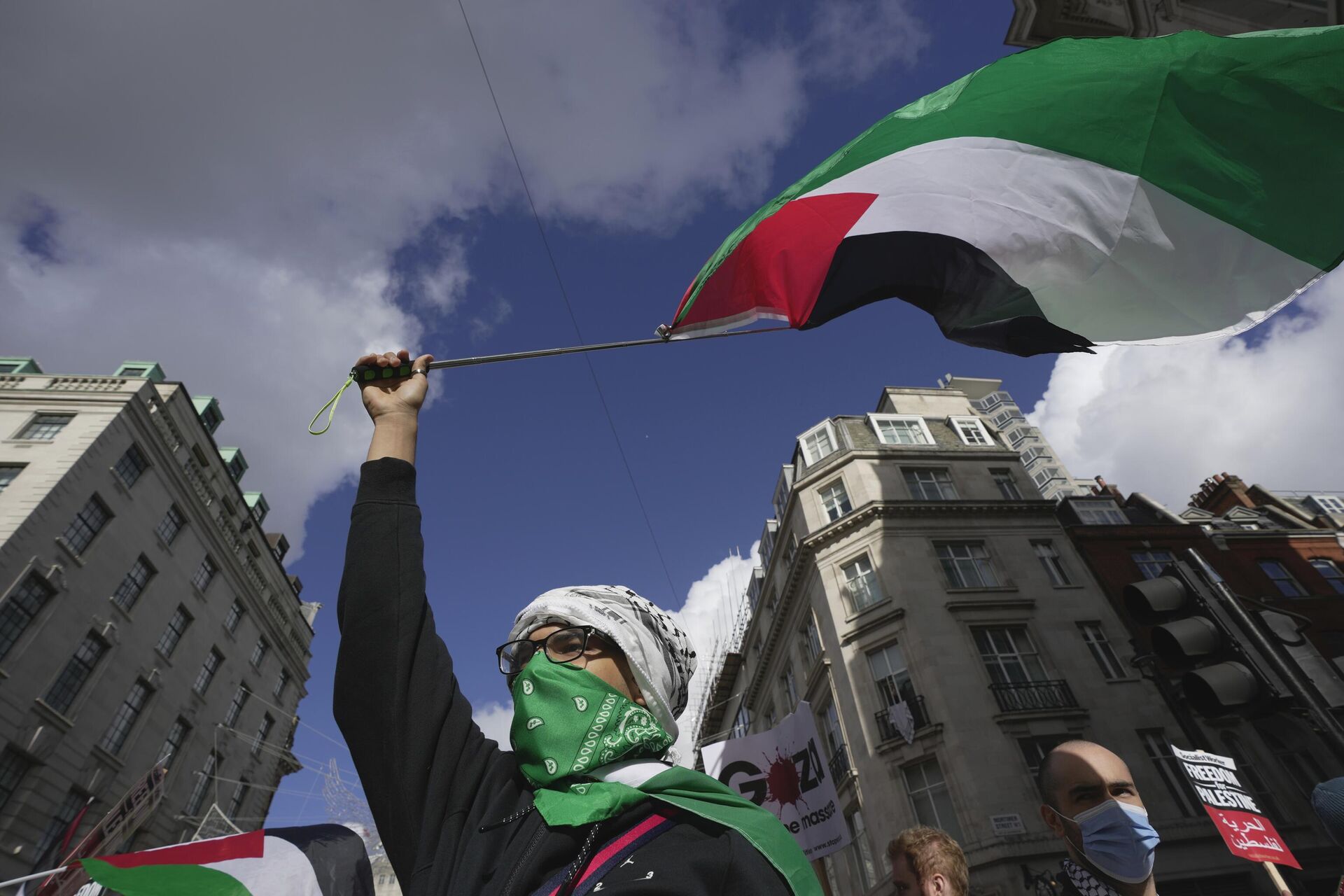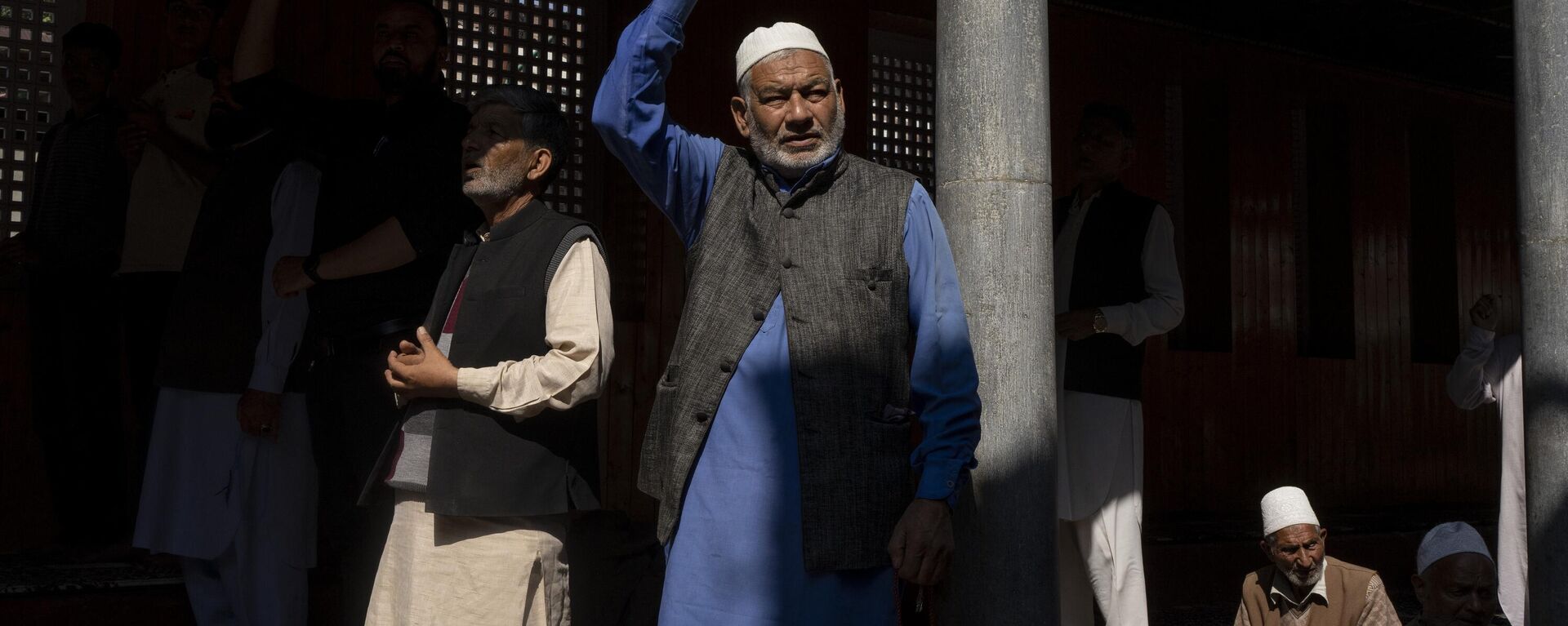https://sputniknews.in/20231129/how-did-watermelon-become-associated-with-palestinian-solidarity-5640127.html
How Did Watermelon Become Associated with Palestinian Solidarity?
How Did Watermelon Become Associated with Palestinian Solidarity?
Sputnik India
The mighty Watermelon – whether it is portrayed in artwork, shared on social media, or held in the hand – is a symbol of Palestinian resistance. Sputnik India... 29.11.2023, Sputnik India
2023-11-29T20:54+0530
2023-11-29T20:54+0530
2023-11-29T20:54+0530
palestine
israel
west bank
israel defense forces (idf)
gaza strip
hamas
palestinian cause
palestine red crescent society (prcs)
humanitarian crisis
human rights
https://cdn1.img.sputniknews.in/img/07e7/0b/1d/5642951_0:0:3072:1728_1920x0_80_0_0_7db83e08581279070e5a9a001233b26b.jpg
The watermelon is a symbol of resistance and persistence of the Palestinians against the Israeli occupation of Gaza and the West Bank.The fruit, whose colours reflect those of the Palestinian flag, is visible from Gaza's stone walls to Ramallah's galleries, offering a glimpse into the political background of the beloved summer fruit.The Palestinian watermelon has evolved over the years into a visible symbol of cultural pride in works of art that depict the resistance to Israel.A new tradition is now forming on the Internet that unites Palestinians across the globe and takes inspiration from late 20th century activists for freedom of speech. Younger generations of artists have been bringing their story – cleverly encapsulated in the minimalist silkscreen of a watermelon – back to life since the protests that were sparked by Israeli violence in Sheikh Jarrah.Connection Between Watermelon & Palestinian ResistanceFollowing the 1967 Six-Day War, the Israeli government outlawed the public display of the Palestinian flag and its colours. Any public display of the flag, including publications, ads, and even old photos, could lead to jail time or worse.With its red, green, black, and white colouring, the watermelon has evolved into a subdued way for the Palestinians to show their pride in their country. Protests have even extended to holding a slice of fresh watermelon outside.Mansour, one of the artists, described to the press how an Israeli police chief attempted to pay them off to depoliticise their work.The Israeli police chief, according to Mansour, subsequently gave the artists instructions to label each painting as either good or bad and to submit it to the IDF for approval prior to the exhibition. The latter would seize anything that fits into that category.Incorporation of Watermelon in Palestinian FlagPalestine was known throughout the world for producing delicious watermelons before the "Nakba" ("Disaster") in 1948, especially in Jenin, the Jordan Valley, and Arabet Al-Batouf.Palestinian watermelons are still a popular export to Lebanon, Jordan, and Syria, and farmers and agriculturalists continue to comment on their impressive size.Palestinian Supporters Express Solidarity Through ArtThe extreme censorship on some Western social media platforms combined with a renewed appreciation for Palestinian art history has encouraged artists to share their own interpretations on social media.These days, Palestinian watermelons are often considered on t-shirts, banners, paintings, murals, and graphic designs.Palestinian art history is largely unknown outside of Palestine, and the IDF persists in attacking Palestinian artists and prohibiting flag displays in Gaza.
https://sputniknews.in/20231129/why-does-the-palestinian-cause-resonate-with-kashmiri-muslims-5613579.html
palestine
israel
west bank
gaza strip
india
Sputnik India
feedback.hindi@sputniknews.com
+74956456601
MIA „Rossiya Segodnya“
2023
Swapna Nair
https://cdn1.img.sputniknews.in/img/07e7/09/12/4320104_0:0:681:681_100x100_80_0_0_ca8a7d4d582609272840ffdd1cde7278.jpg
Swapna Nair
https://cdn1.img.sputniknews.in/img/07e7/09/12/4320104_0:0:681:681_100x100_80_0_0_ca8a7d4d582609272840ffdd1cde7278.jpg
News
en_IN
Sputnik India
feedback.hindi@sputniknews.com
+74956456601
MIA „Rossiya Segodnya“
Sputnik India
feedback.hindi@sputniknews.com
+74956456601
MIA „Rossiya Segodnya“
Swapna Nair
https://cdn1.img.sputniknews.in/img/07e7/09/12/4320104_0:0:681:681_100x100_80_0_0_ca8a7d4d582609272840ffdd1cde7278.jpg
watermelon, resistance, persistence, palestinians, israeli occupation of gaza, west bank, colours, palestinian flag, gaza's stone walls, ramallah's galleries,summer fruit, palestinian watermelon, symbol of cultural pride in works of art, resistance to israel, palestinians, globe, 20th-century activists, minimalist silkscreen, israeli violence, sheikh jarrah, palestinian resistance, israeli government, palestinian flag , zionist forces, nabil anani, sliman mansour, isam bader, palestinian flag, israeli police chief, idf, settler-colonialism, watermelon, palestinian flag, nakba in 1948, jenin, the jordan valley, arabet al-batouf, settler authorities, israel defence forces (idf), lebanon, jordan, and syria, idf tanks, palestinian artist, khaled hourani, second intifada, facebook and instagram,
watermelon, resistance, persistence, palestinians, israeli occupation of gaza, west bank, colours, palestinian flag, gaza's stone walls, ramallah's galleries,summer fruit, palestinian watermelon, symbol of cultural pride in works of art, resistance to israel, palestinians, globe, 20th-century activists, minimalist silkscreen, israeli violence, sheikh jarrah, palestinian resistance, israeli government, palestinian flag , zionist forces, nabil anani, sliman mansour, isam bader, palestinian flag, israeli police chief, idf, settler-colonialism, watermelon, palestinian flag, nakba in 1948, jenin, the jordan valley, arabet al-batouf, settler authorities, israel defence forces (idf), lebanon, jordan, and syria, idf tanks, palestinian artist, khaled hourani, second intifada, facebook and instagram,
How Did Watermelon Become Associated with Palestinian Solidarity?
The mighty Watermelon – whether it is portrayed in artwork, shared on social media, or held in the hand – is a symbol of Palestinian resistance. Sputnik India explores the historical connection between the watermelon and Palestinians.
The watermelon is a symbol of resistance and persistence of the Palestinians against the Israeli occupation of Gaza and the West Bank.
The fruit, whose colours reflect those of the Palestinian flag, is visible from Gaza's stone walls to Ramallah's galleries, offering a glimpse into the political background of the beloved summer fruit.
The Palestinian watermelon has evolved over the years into a visible symbol of
cultural pride in works of art that depict the resistance to Israel.
A new tradition is now forming on the Internet that unites Palestinians across the globe and takes inspiration from late 20th century activists for freedom of speech. Younger generations of artists have been bringing their story – cleverly encapsulated in the minimalist silkscreen of a watermelon – back to life since the protests that were sparked by Israeli violence in Sheikh Jarrah.
Connection Between Watermelon & Palestinian Resistance
Following the 1967 Six-Day War, the
Israeli government outlawed the public display of the Palestinian flag and its colours. Any public display of the flag, including publications, ads, and even old photos, could lead to jail time or worse.
With its red, green, black, and white colouring, the watermelon has evolved into a subdued way for the Palestinians to show their pride in their country. Protests have even extended to holding a slice of fresh watermelon outside.
Israeli forces demolished a significant art gallery in Ramallah in the 1980s and took three artists into custody – Nabil Anani, Sliman Mansour, and Isam Bader – for incorporating the colours of the Palestinian flag in their works.
Mansour, one of the artists, described to the press how an Israeli police chief attempted to pay them off to depoliticise their work.
“He was trying to convince us not to do any political art, saying to us, ‘Why do you do political art? Why don’t you paint nice flowers or a nude figure? It’s nice. I will even buy from you'”, Mansour said.
The Israeli police chief, according to Mansour, subsequently gave the artists instructions to label each painting as either good or bad and to submit it to the IDF for approval prior to the
exhibition. The latter would seize anything that fits into that category.
"Even if you do a watermelon, it will be confiscated", the officer yelled, according to Mansour. "Therefore, the officer had the original idea for the watermelon, not us", Mansour said.
Incorporation of Watermelon in Palestinian Flag
Palestine was known throughout the world for producing delicious watermelons before the "Nakba" ("Disaster") in 1948, especially in Jenin, the Jordan Valley, and Arabet Al-Batouf.
However, the authorities introduced their own seed companies and flooded the market, driving out Palestinian competition as the Israel Defence Forces (IDF) began occupying Palestinian neighbourhoods.
Palestinian watermelons are still a popular export to Lebanon, Jordan, and Syria, and farmers and agriculturalists continue to comment on their impressive size.
Palestinians claimed to distinguish the difference between watermelons grown in Israeli greenhouses and those grown locally; they would save the former to eat, and throw the latter at IDF tanks.
Palestinian Supporters Express Solidarity Through Art
The extreme censorship on some Western social media platforms combined with a renewed appreciation for Palestinian art history has encouraged artists to share their own interpretations on social media.
These days, Palestinian
watermelons are often considered on t-shirts, banners, paintings, murals, and graphic designs.
Digital artist Gaytor Al located a newspaper article from May 1984 detailing the persecution of Gaza artist Fathi Ghabin, whose nephew Suhain, aged seven, was shot and killed by IDF soldiers. Suhain's bleeding corpse was depicted by Ghabin on the ground, encircled by Palestinian demonstrators holding up their arms. Ghabin was found guilty of "inciting material" merely by virtue of the flag's colour scheme.
Palestinian art history is largely unknown outside of Palestine, and the IDF persists in attacking Palestinian artists and prohibiting flag displays in Gaza.





